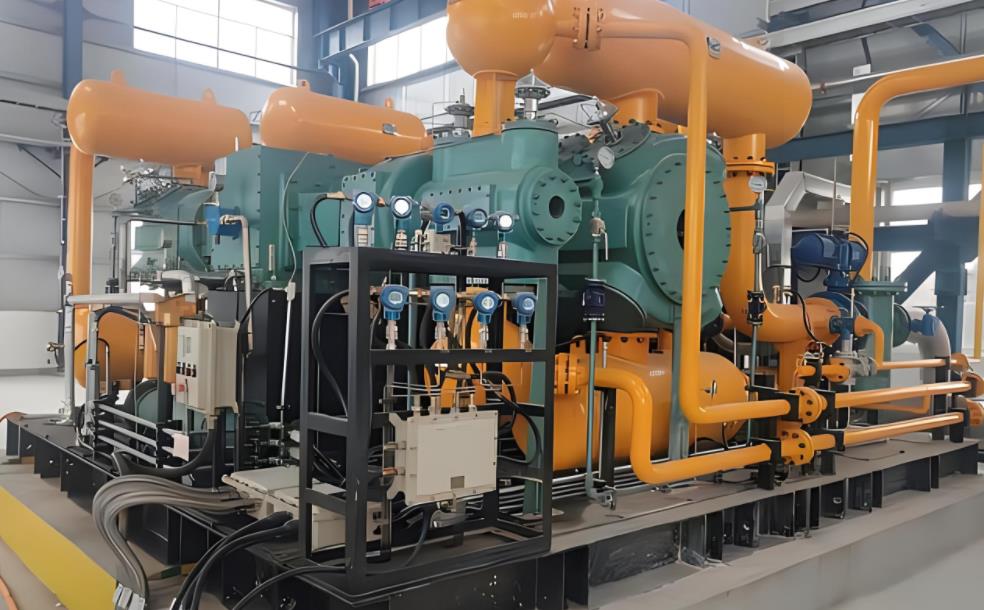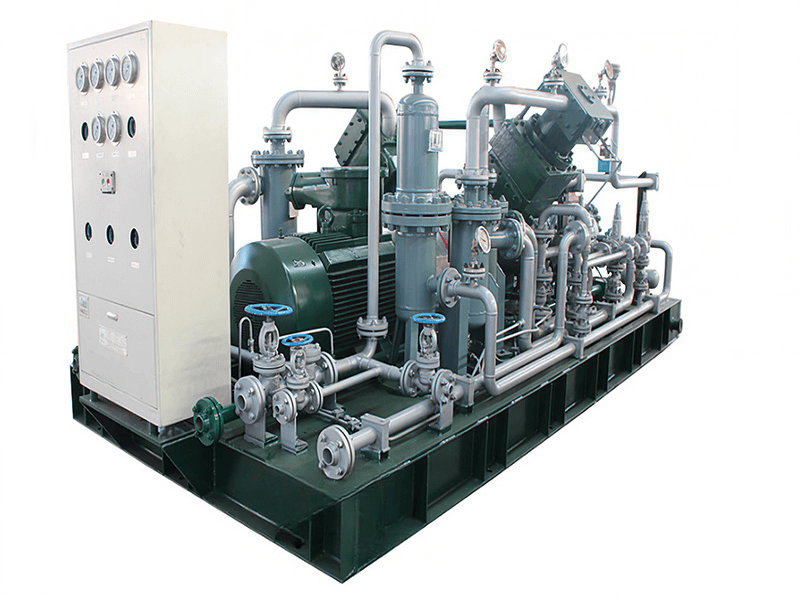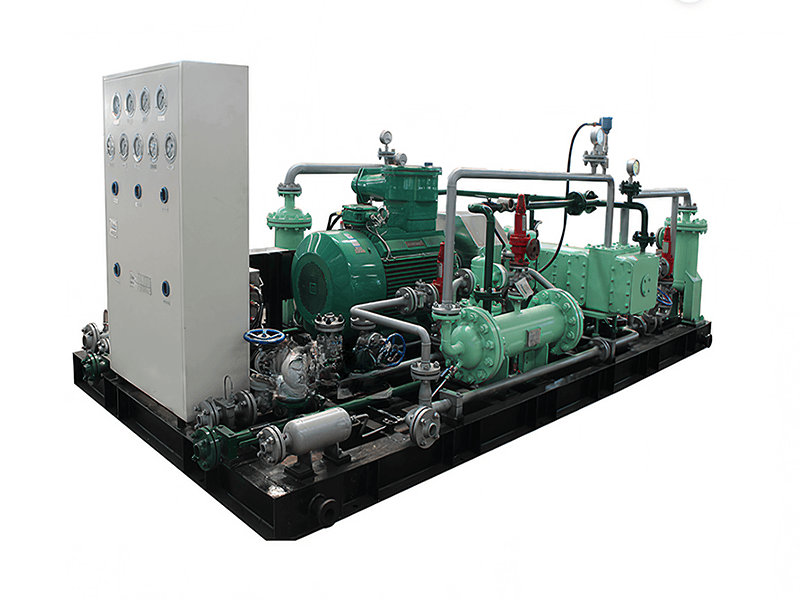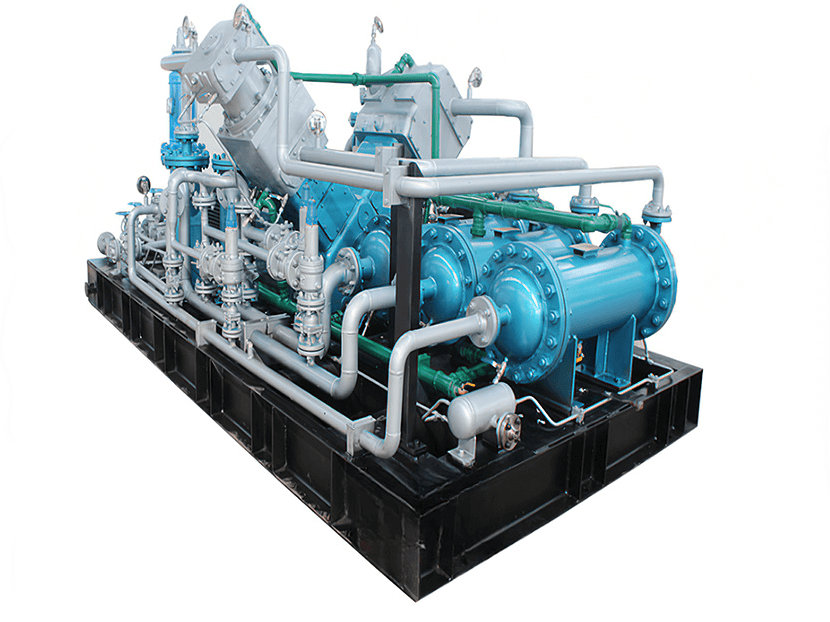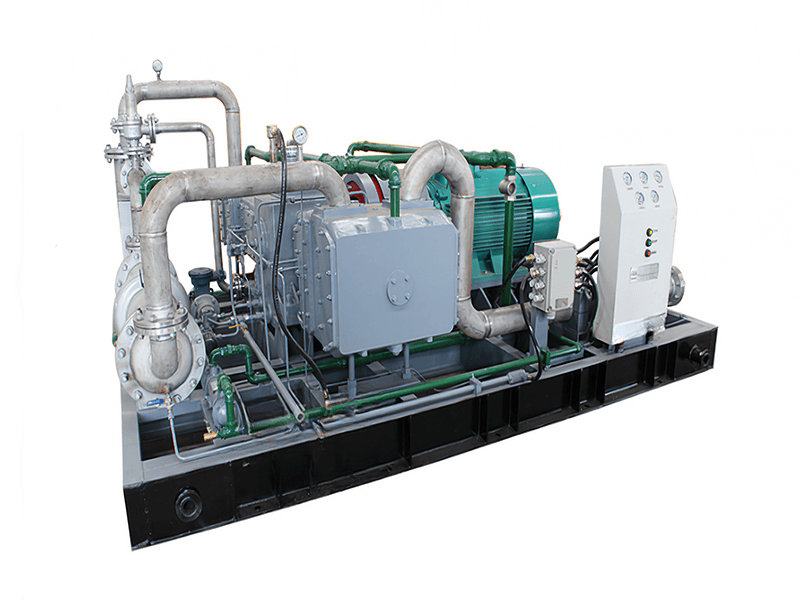In the industrial sector, compressed air systems are referred to as the "fourth utility," accounting for approximately 10%-15% of total industrial energy consumption. Selecting the right type of compressor is crucial for ensuring production stability and reducing operational costs. This article systematically analyzes the technical characteristics of five mainstream industrial compressors to provide professional guidance for equipment selection.
1. Piston Compressor
Based on positive displacement compression, the rotary motion of the motor is converted into reciprocating piston movement via a crankshaft-connecting rod mechanism. As the piston moves toward the crankcase, the cylinder volume expands, creating negative pressure to open the intake valve and draw in gas. During the reverse movement, the gas is compressed, and the exhaust valve opens once the rated pressure is reached. A complete cycle involves four stages: intake, compression, exhaust, and expansion.
Technical Parameters:
·Pressure Range: 0.7–100 MPa (multi-stage compression)
·Flow Range: 0.5–100 m³/min
·Specific Power: 6.0–7.5 kW/(m³/min)
Features:
Suitable for high-pressure, low-flow conditions but generates significant vibration and noise (typically >85 dB), requiring reinforced foundations and noise reduction measures.
2. Centrifugal Compressor
Based on dynamic compression, gas enters an axial intake chamber and is accelerated by high-speed impellers (3,000–20,000 rpm), gaining kinetic energy through centrifugal force. The kinetic energy is then converted into pressure energy via a diffuser. Multi-stage impellers are used for progressive compression, with intercoolers to manage temperature rise.
Technical Parameters:
Pressure Range: 0.2–4.0 MPa (single-stage pressure ratio: 1.1–1.5)
Flow Range: 100–5,000 m³/min
Specific Power: 5.8–6.3 kW/(m³/min)
Features:
Ideal for high-flow, medium-to-low-pressure applications, delivering oil-free gas. However, it has a surge limit (anti-surge control is required when flow drops below 30% of the design value).

3. Screw Compressor
A pair of intermeshing rotors (male and female) rotate within a housing, causing periodic changes in chamber volume to achieve continuous gas compression. Oil-injected screw compressors use lubricant for sealing, cooling, and noise reduction, while oil-free models employ timing gears and non-contact seals.
Technical Parameters:
Pressure Range: 0.7–1.6 MPa (standard) / 2.5 MPa (special design)
Flow Range: 5–200 m³/min
Specific Power: 5.8–6.5 kW/(m³/min) (oil-injected) / 6.2–7.0 kW/(m³/min) (oil-free)
Features:
Smooth operation (vibration <2.5 mm/s), suitable for variable conditions, but requires high rotor profile machining precision (tolerance <0.01 mm).
4. Scroll Compressor
A fixed scroll and an orbiting scroll interlock to form multiple sealed compression chambers. The orbiting scroll moves in a circular path via an anti-rotation mechanism, continuously reducing chamber volume as gas moves toward the center for compression.
Technical Parameters:
Pressure Range: 0.6–1.2 MPa
Flow Range: 1–20 m³/min
Specific Power: 6.5–7.2 kW/(m³/min)
Features:
Compact design (60% fewer parts than piston compressors), noise <65 dB, but limited pressure capacity, making it unsuitable for high-pressure applications.
5. Sliding Vane Compressor
Radial slots in an offset rotor hold sliding vanes that press against the cylinder wall due to centrifugal force, forming sealed chambers. As the rotor turns, these chambers shrink while moving from the intake to the exhaust port, compressing the gas.
Technical Parameters:
Pressure Range: 0.7–1.0 MPa
Flow Range: 1–50 m³/min
Specific Power: 6.8–7.5 kW/(m³/min)
Features:
Simple structure and easy maintenance, but vane wear reduces efficiency (typically requiring replacement every 2,000 hours), with lower mechanical efficiency.
Comparative Analysis:
·Energy Efficiency:Centrifugal compressors excel at full load, screw compressors perform best under partial load, and piston compressors are optimal for high-pressure conditions.
·Maintenance Costs:Scroll compressors have the longest maintenance intervals (8,000 hours), while sliding vane compressors require the most frequent upkeep (2,000 hours).
·Gas Compatibility: Piston compressors suit specialty gases, centrifugal compressors are ideal for clean air, and screw compressors offer the broadest applicability.
·Lifecycle Costs:Centrifugal for high flow, screw for variable conditions, piston for high-pressure/low-flow scenarios.
Selection Guidelines:
·Flow <10 m³/min, Pressure <1.0 MPa: Prefer scroll or sliding vane compressors.
·Flow 10–100 m³/min, Pressure 0.7–1.6 MPa: Screw compressors are optimal.
·Flow >100 m³/min, Pressure <1.0 MPa: Centrifugal compressors are recommended.
·Pressure >5.0 MPa: Multi-stage piston compressors are mandatory.
·Dusty/Corrosive Gases: Require front-end pretreatment systems.
Conclusion:
Compressor selection must balance pressure needs, flow characteristics, gas properties, energy efficiency, and total lifecycle costs. Professional evaluation using ISO 11011 standards for compressed air system audits is advised to ensure optimal technical and economic outcomes.





